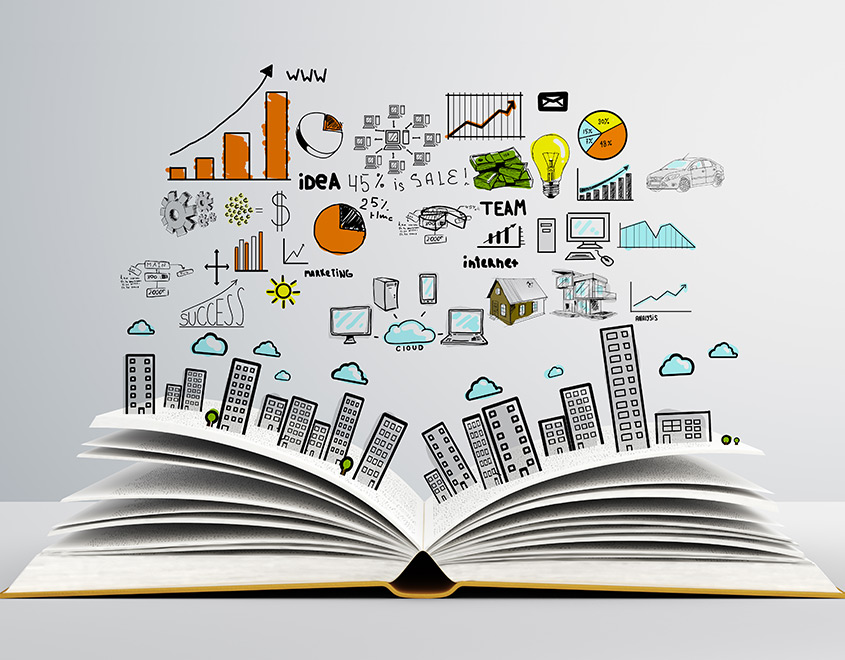Unlock New Opportunities in Education with Prized Possession Resources and Insights
Unlock New Opportunities in Education with Prized Possession Resources and Insights
Blog Article
Comprehensive Business Guides for Advancing Technology Education in Schools and Colleges
The integration of innovation education and learning into institution and university educational program has ended up being a crucial imperative in preparing trainees for a significantly digital workforce. Extensive organization guides play an essential duty in this transformation by outlining the needed frameworks for effective program application, promoting necessary market collaborations, and measuring educational outcomes. As schools aim to straighten themselves with market demands, the chances and difficulties provided by these guides merit a closer evaluation. Grants. What particular techniques can be adopted to maximize their effect on both instructors and trainees?
Importance of Modern Technology Education
As technology proceeds to progress at an unmatched pace, the significance of innovation education and learning has actually ended up being progressively apparent in today's culture. The integration of technology right into various elements of life demands that individuals have a foundational understanding of technical concepts and applications. This knowledge not just enhances employability however also promotes vital reasoning and problem-solving abilities essential for browsing a vibrant workforce.
In universities, technology education and learning gears up pupils with the capability to adjust to rapid adjustments in markets driven by innovation. It motivates creative thinking and equips students to engage with arising technologies, from man-made knowledge to data analytics. Furthermore, modern technology education promotes electronic proficiency, which is important in an age where information is readily available yet often misleading.

Secret Components of Effective Guides
Effective overviews for modern technology education should encompass several essential elements to make certain that learners gain the most from their experiences. A distinct curriculum is necessary, outlining the goals, discovering results, and the abilities to be created. This curriculum ought to be frequently updated to mirror the swiftly progressing technological landscape, making sure relevance and applicability.
Second, comprehensive resources that include books, online products, and hands-on devices are vital. These sources must be obtainable and diverse, accommodating various learning styles and preferences. Additionally, integrating real-world circumstances and study can enhance understanding and interaction.
Third, evaluation methods must be consisted of to assess student development properly. These assessments must be varied, incorporating developmental and summative evaluations that line up with the knowing goals.
Furthermore, expert advancement chances for educators are important. Training workshops and programs can equip instructors with the most up to date technical developments and pedagogical approaches.
Lastly, cultivating a collective discovering setting urges peer interaction and expertise sharing. By including these essential components, guides for modern technology education and learning can substantially enhance the discovering experience, preparing students for future difficulties in an increasingly digital world.
Building Sector Collaborations
Building strong industry partnerships is an essential aspect of boosting technology education. These cooperations in between universities and organizations create a vibrant community that profits companies, teachers, and trainees alike. By promoting partnerships with sector leaders, colleges and colleges can straighten their educational programs with the advancing needs of the work market, making certain that students obtain pertinent abilities and expertise.
The growth of internships, apprenticeships, and mentorship programs functions as a foundation of these partnerships. Such opportunities provide pupils with hands-on experience, boosting their employability and sensible understanding of technology applications. Furthermore, industry partners can use insights into arising trends and technical advancements, permitting teachers to adapt their mentor approaches accordingly.
Additionally, collaborations can assist in accessibility to sources, such as tools, software, and funding for research study projects. These contributions improve the discovering atmosphere and enable institutions to remain at the forefront of technical development. Ultimately, constructing durable industry collaborations is vital for cultivating a skilled labor force that meets the needs of today's quickly altering technical landscape, while also driving economic development and competition in the wider community.
Implementing Innovation Programs
Carrying out technology programs within universities calls for a calculated technique that focuses on both curriculum advancement and resource allocation. To start successful technology integration, establishments need to initially evaluate their existing infrastructure and identify spaces in sources, including equipment, software, and employees training. This assessment enables schools and colleges to develop a tailored plan that straightens with their certain academic objectives.
Next, it is important to establish a comprehensive curriculum that includes arising innovations and industry criteria. Working together with instructors, market professionals, and stakeholders can guarantee that the educational program stays appropriate and effective in preparing students for the workforce (Grants). In addition, specialist development for faculty is important, as it outfits instructors with the abilities required to efficiently teach new technologies
In addition, organizations should stress the value of hands-on understanding experiences, such as laboratories and workshops, that allow students to apply theoretical knowledge in useful settings. This experiential technique boosts involvement and promotes essential reasoning. Finally, safeguarding lasting funding via gives and partnerships can assist maintain and increase technology programs, ensuring lasting success and flexibility Bonuses in an ever-evolving technological landscape.
Determining Success and Outcomes
Analyzing the success and end results of technology education and learning programs is vital for validating their effect and directing future improvements. Reliable measurement frameworks need to encompass both qualitative and measurable metrics, providing an extensive sight of program effectiveness. Key performance indications (KPIs) such as student enrollment numbers, retention rates, and training course completion portions supply important quantitative data.

Incorporating standardized analyses can additionally evaluate pupils' technical competencies and preparedness for the workforce. Benchmarking versus comparable establishments enables contextually appropriate contrasts, highlighting areas for development.
Eventually, the continual examination of innovation education programs promotes a culture of enhancement, making sure that they progress abreast with market needs and academic requirements. By systematically gauging success, organizations can not only demonstrate responsibility to stakeholders but likewise improve their offerings, thereby improving the finding out experience and preparing trainees for the ever-changing technological landscape.
Conclusion

The integration of modern technology education and learning right into institution and university educational program has actually become a critical vital in preparing pupils for a significantly electronic labor force.As modern technology continues to advance at an unprecedented speed, the importance of modern technology education and learning has actually come to be increasingly obvious in today's culture.In instructional establishments, modern technology education and learning outfits pupils with the capability to adapt to fast modifications in sectors driven by development. By prioritizing innovation education, organizations can grow a generation of informed residents qualified of leveraging technology for societal and personal innovation. The implementation of durable analysis approaches allows institutions to measure success and results, eventually improving the overall effectiveness of modern technology education and learning efforts and preparing trainees for future obstacles.
Report this page